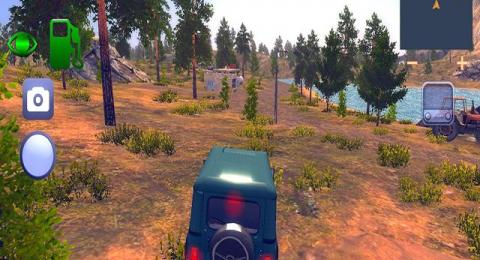
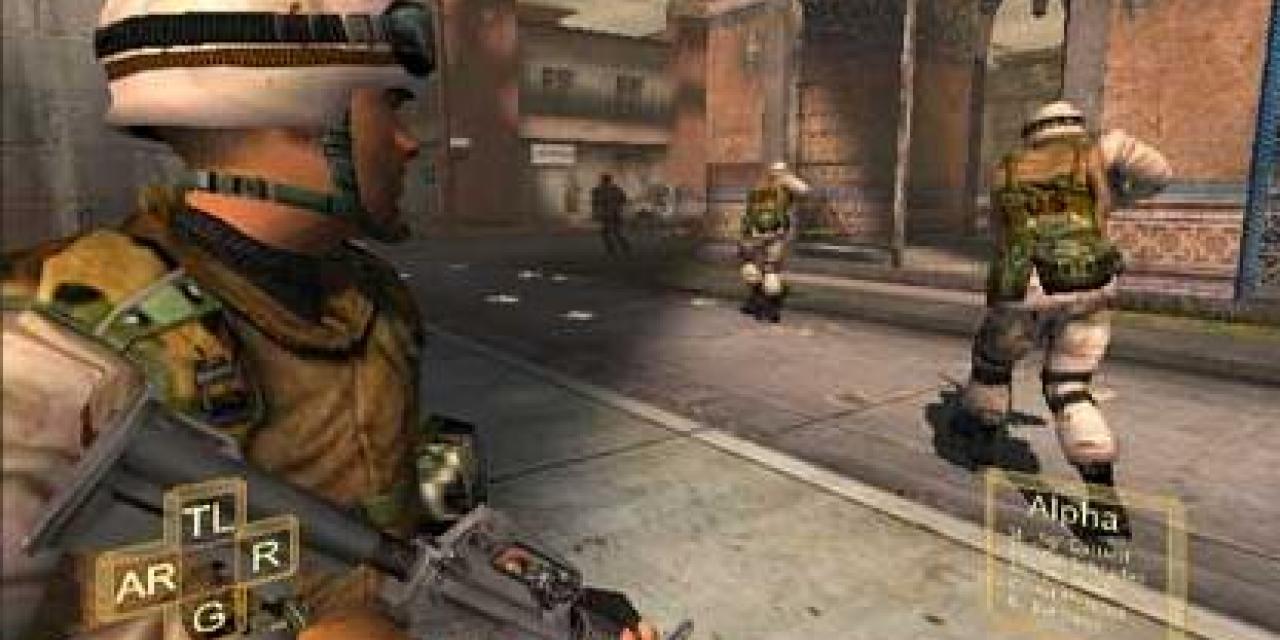
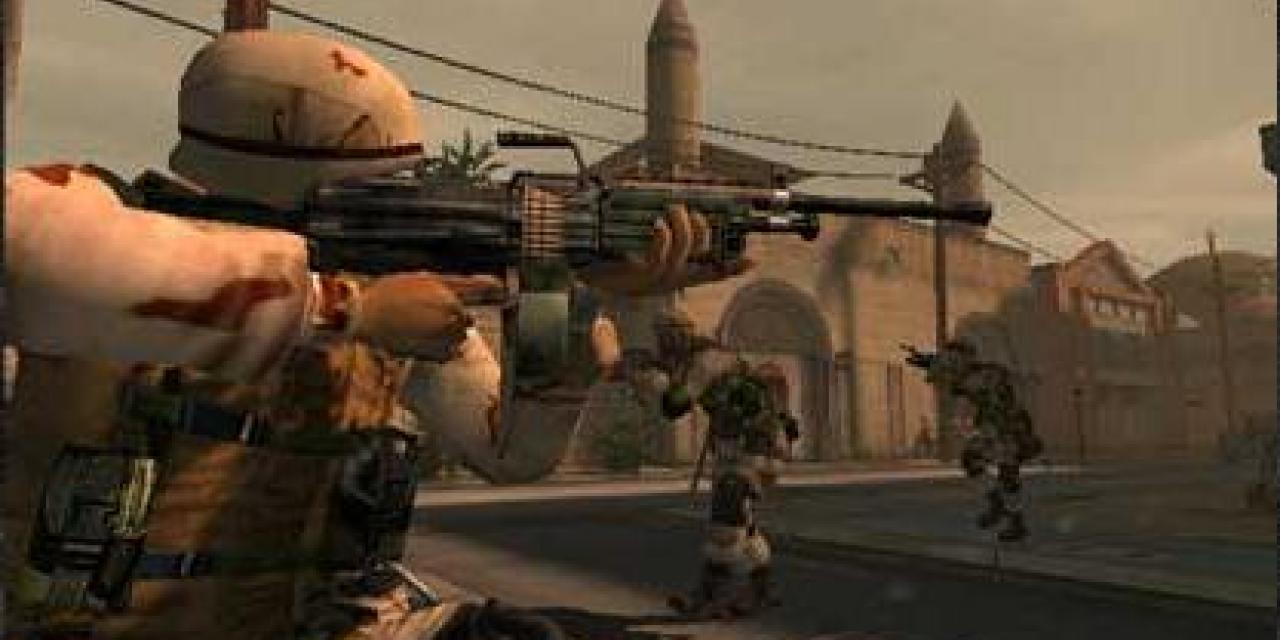
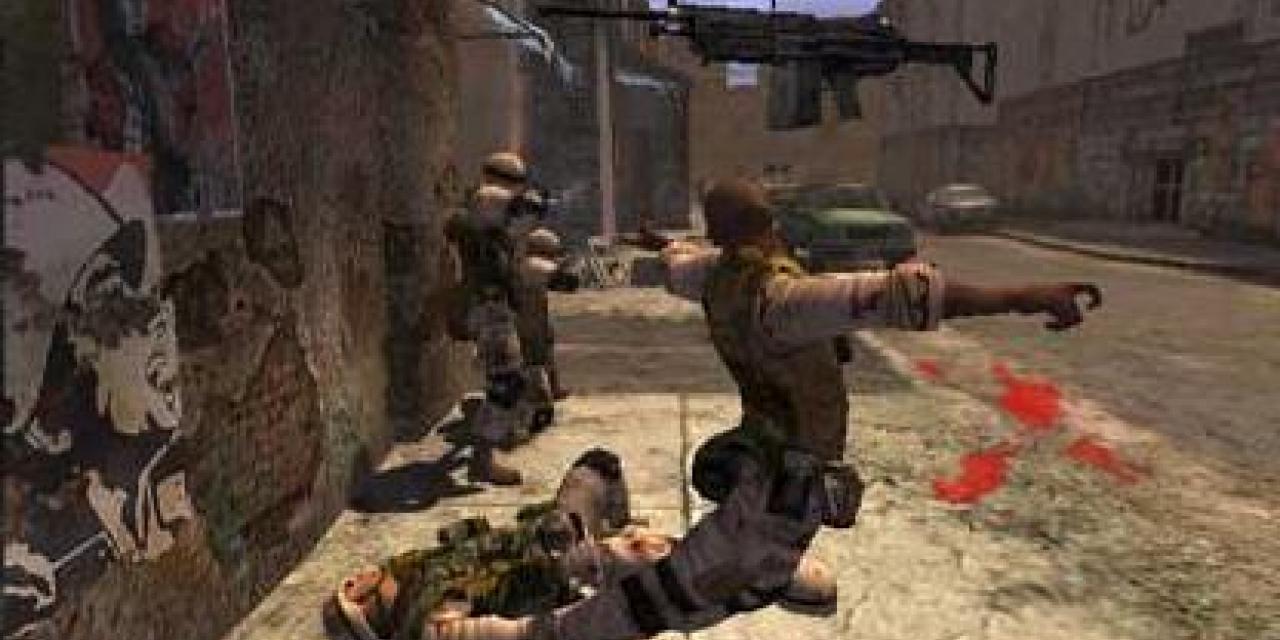
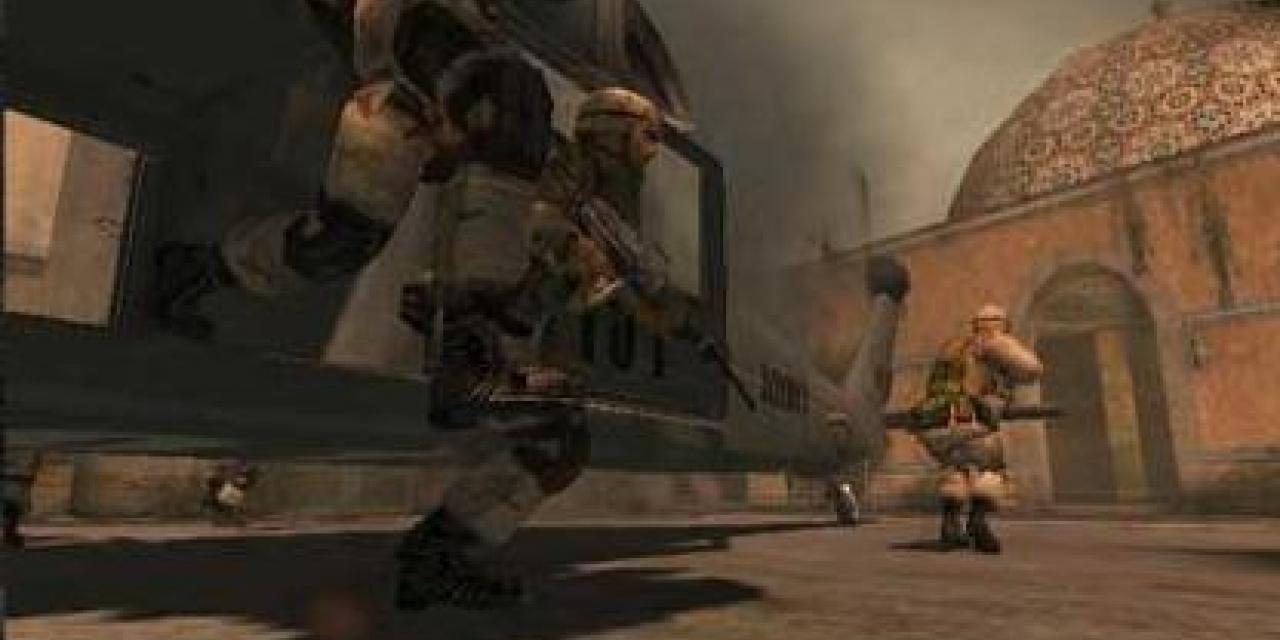
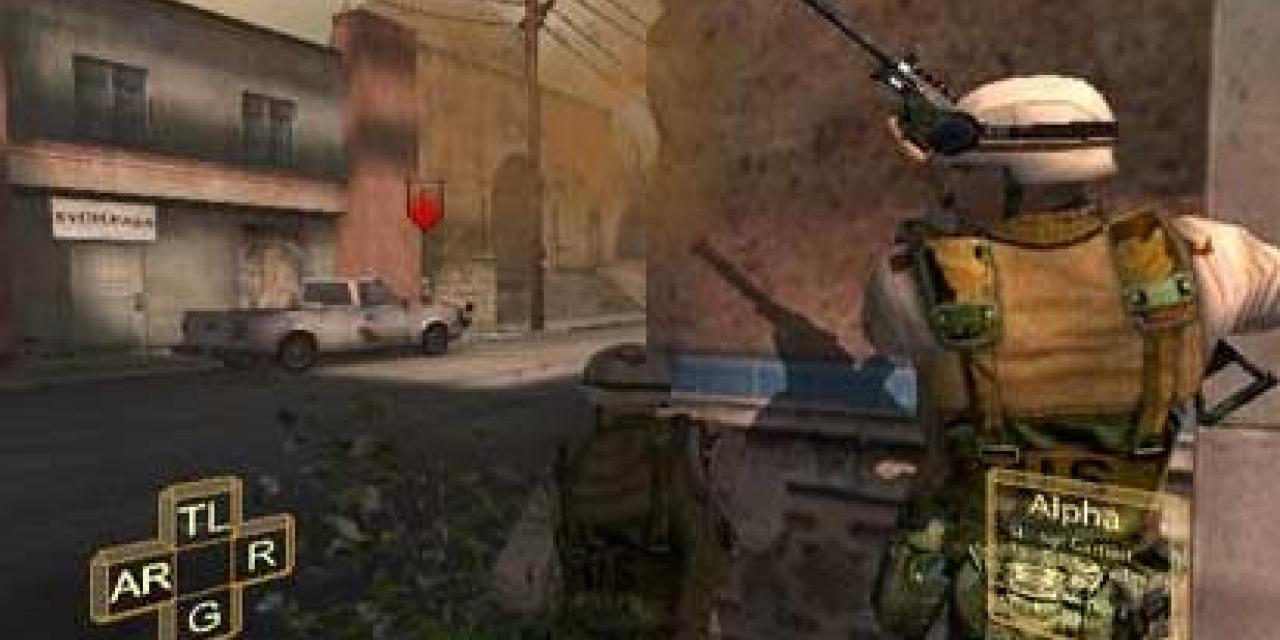
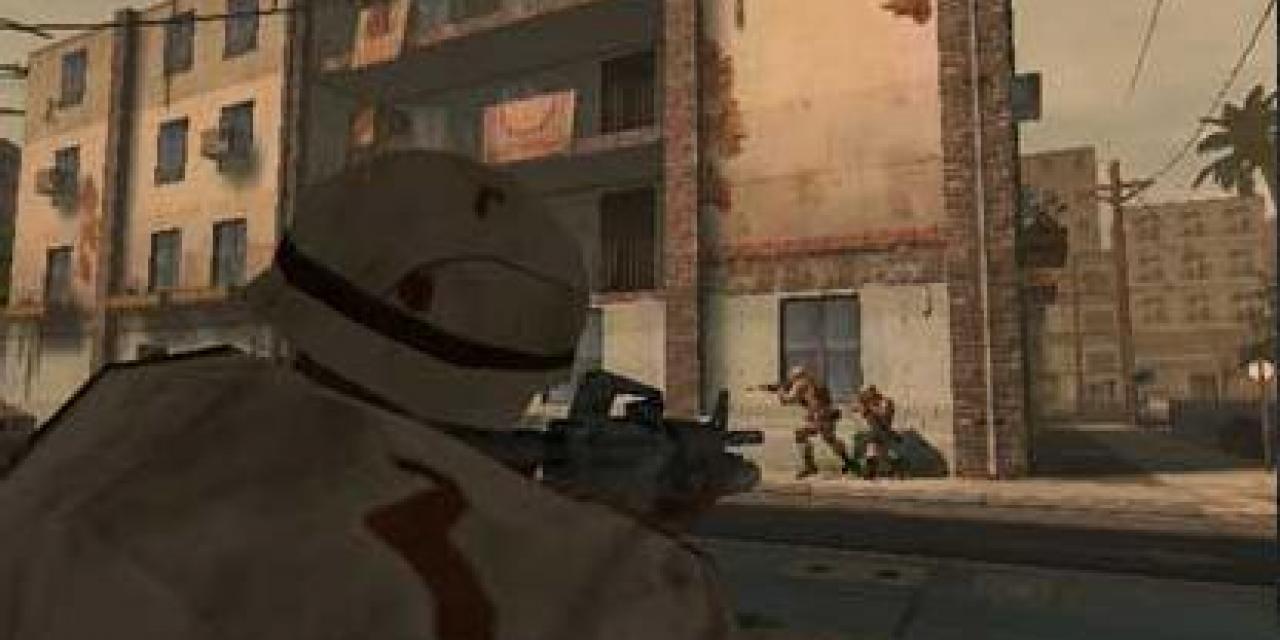

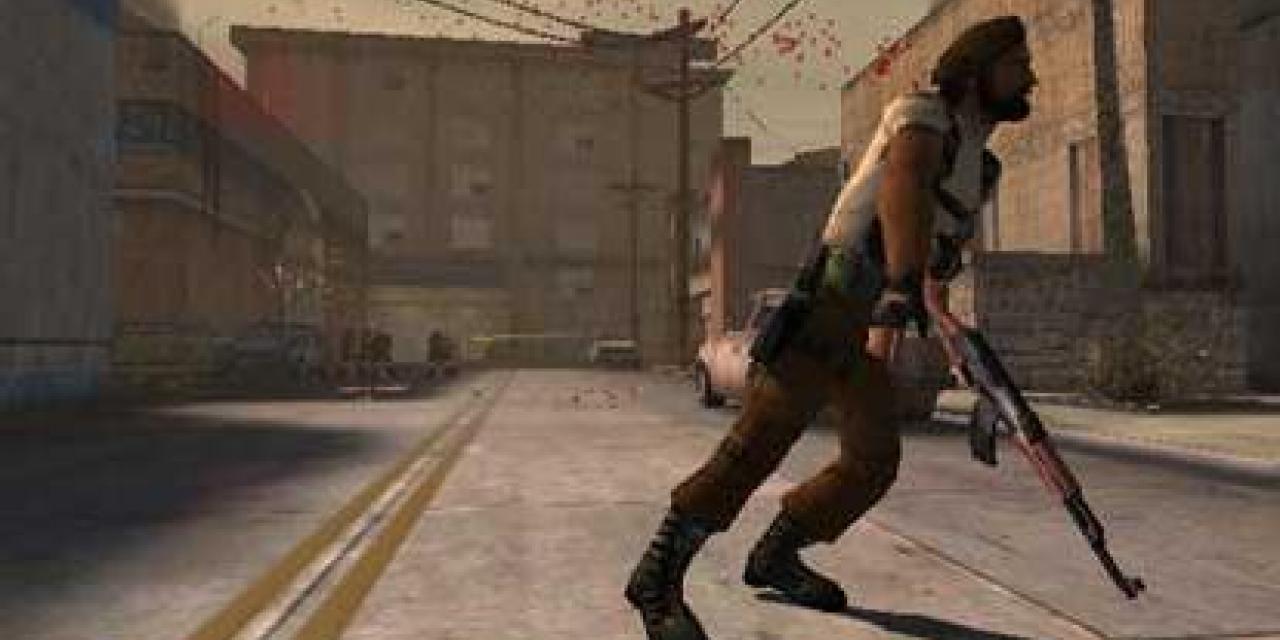
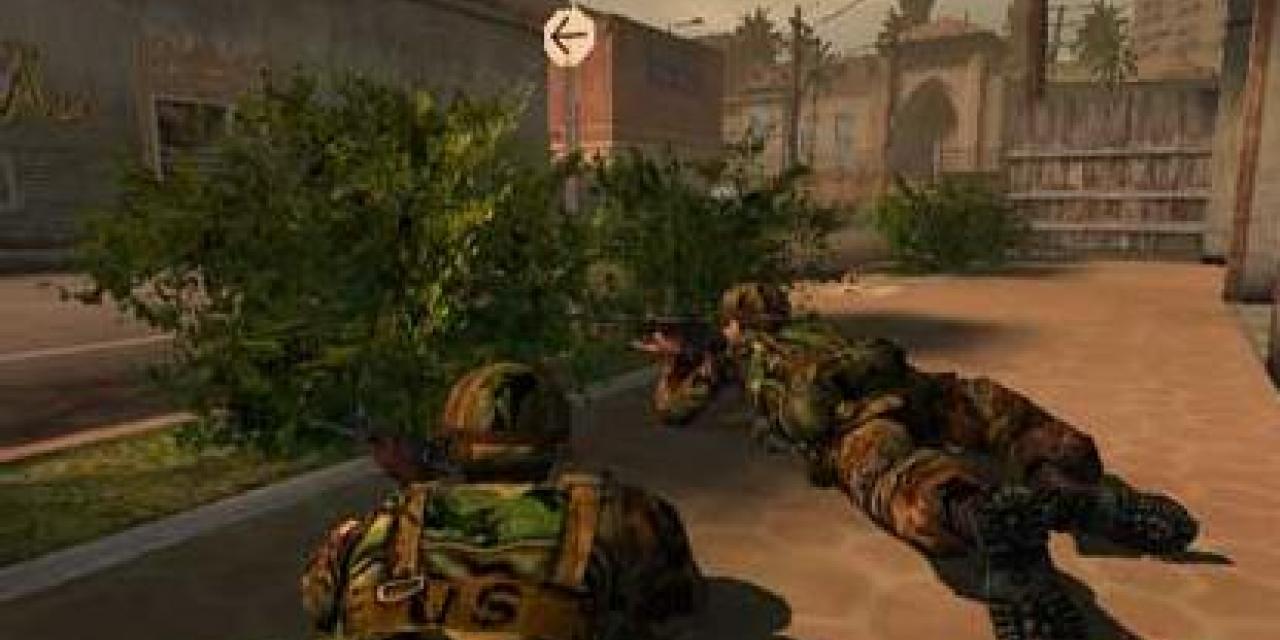
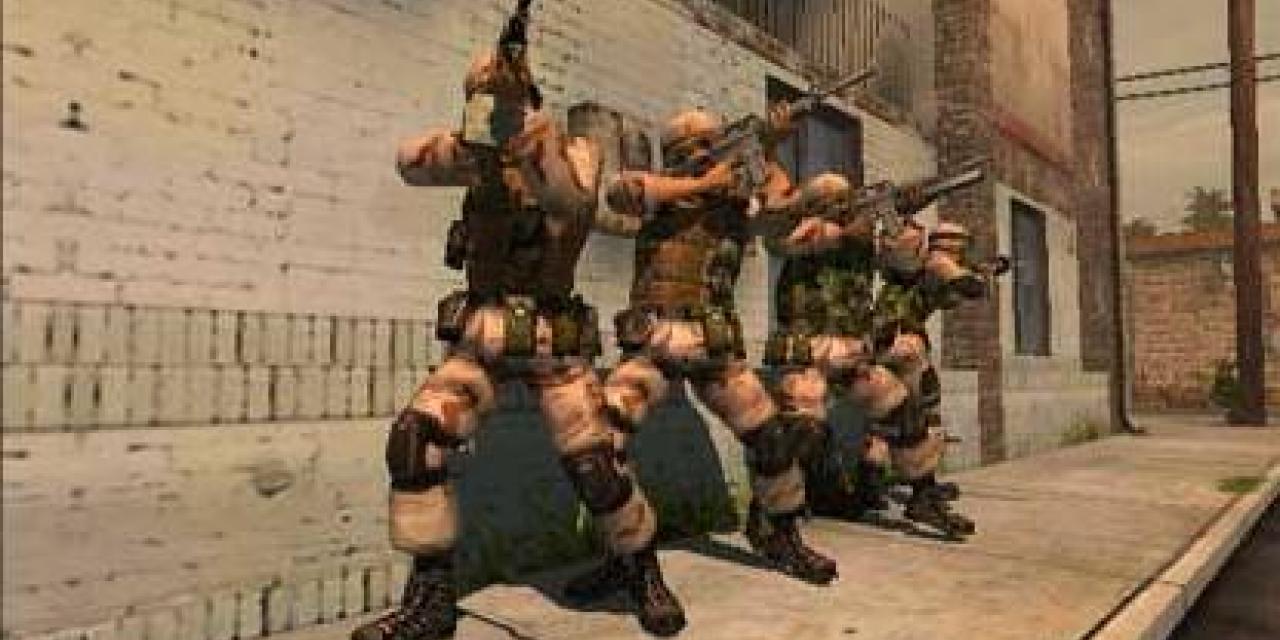
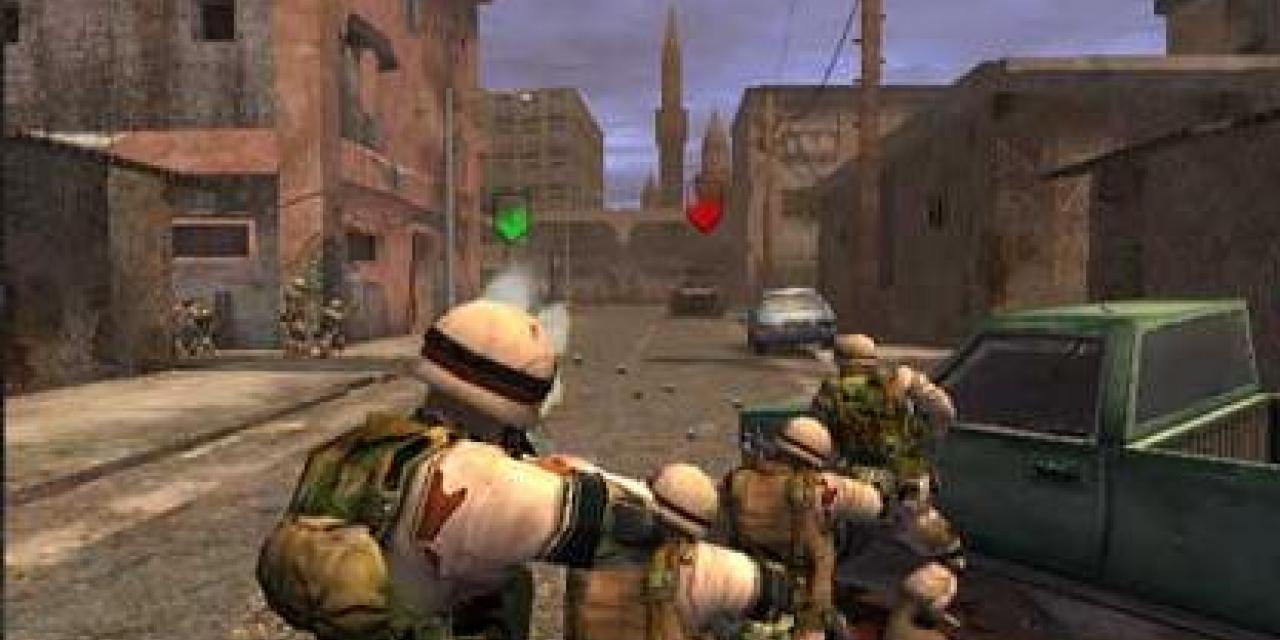


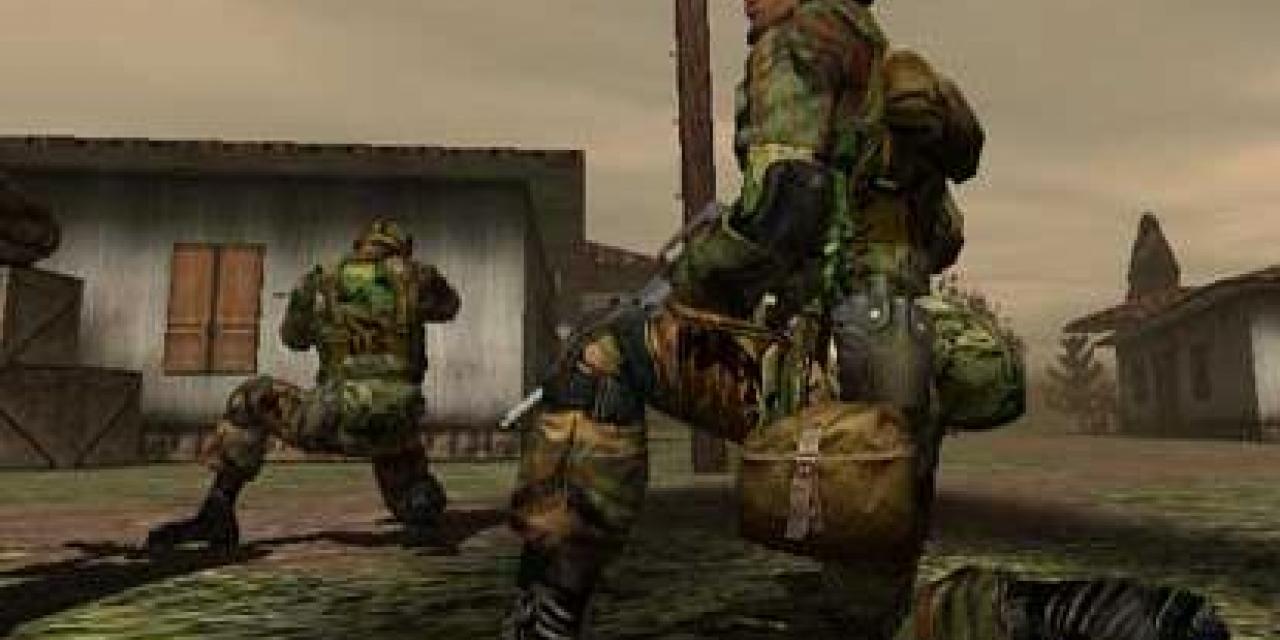
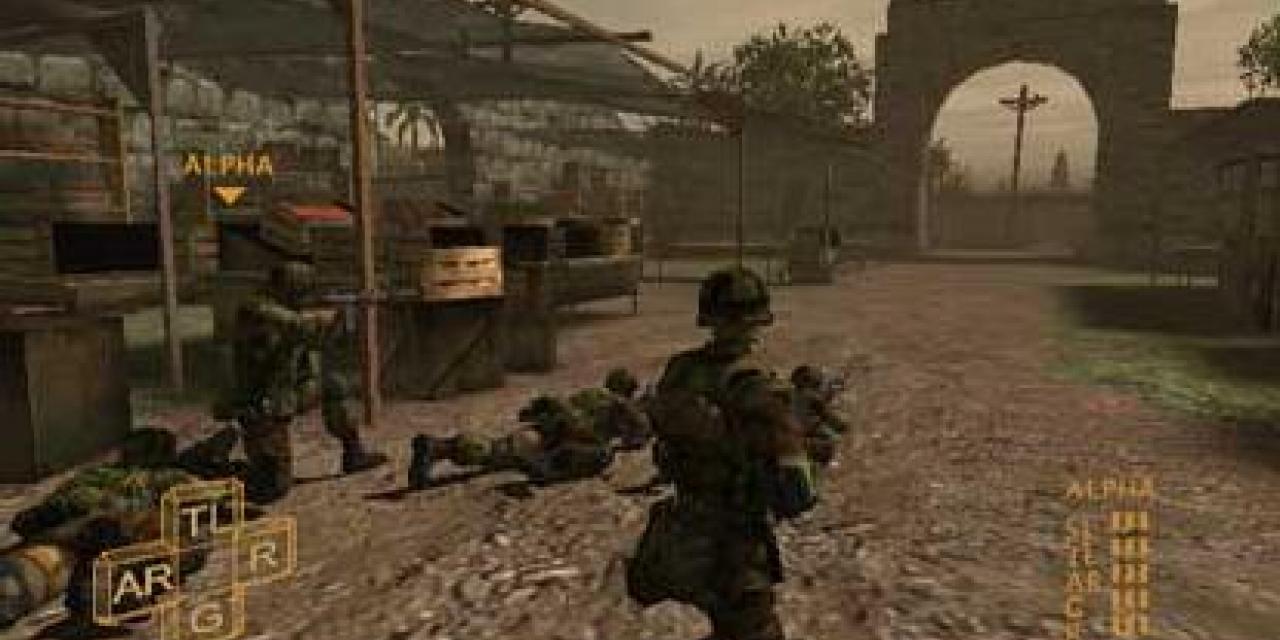
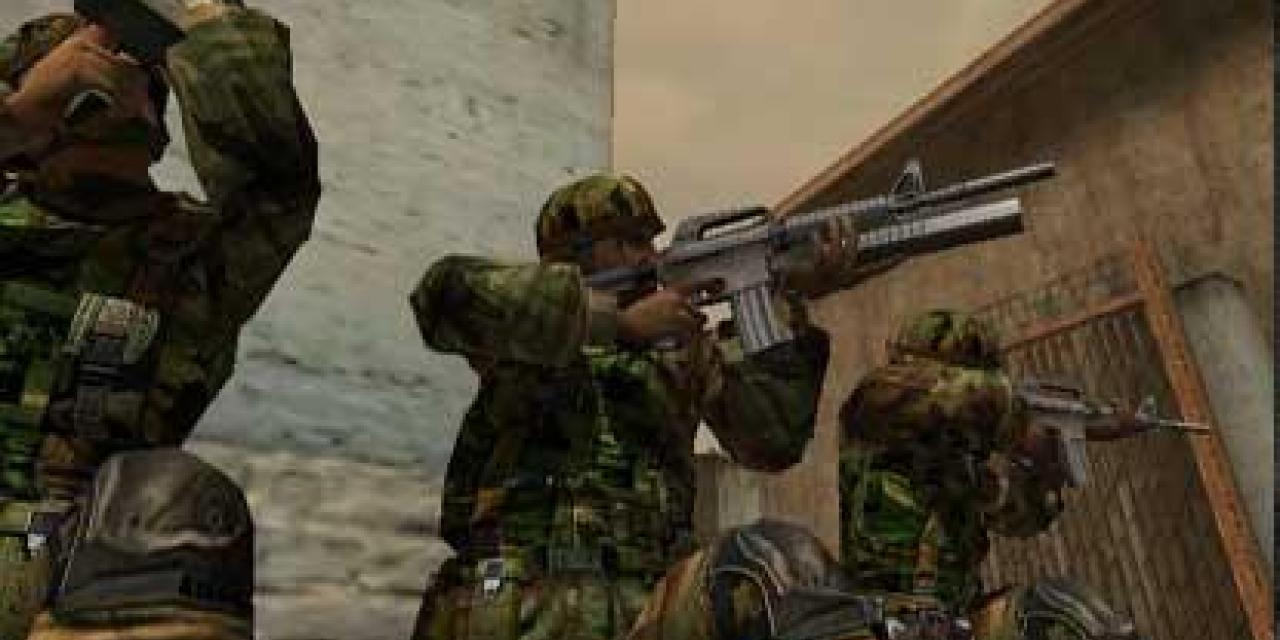
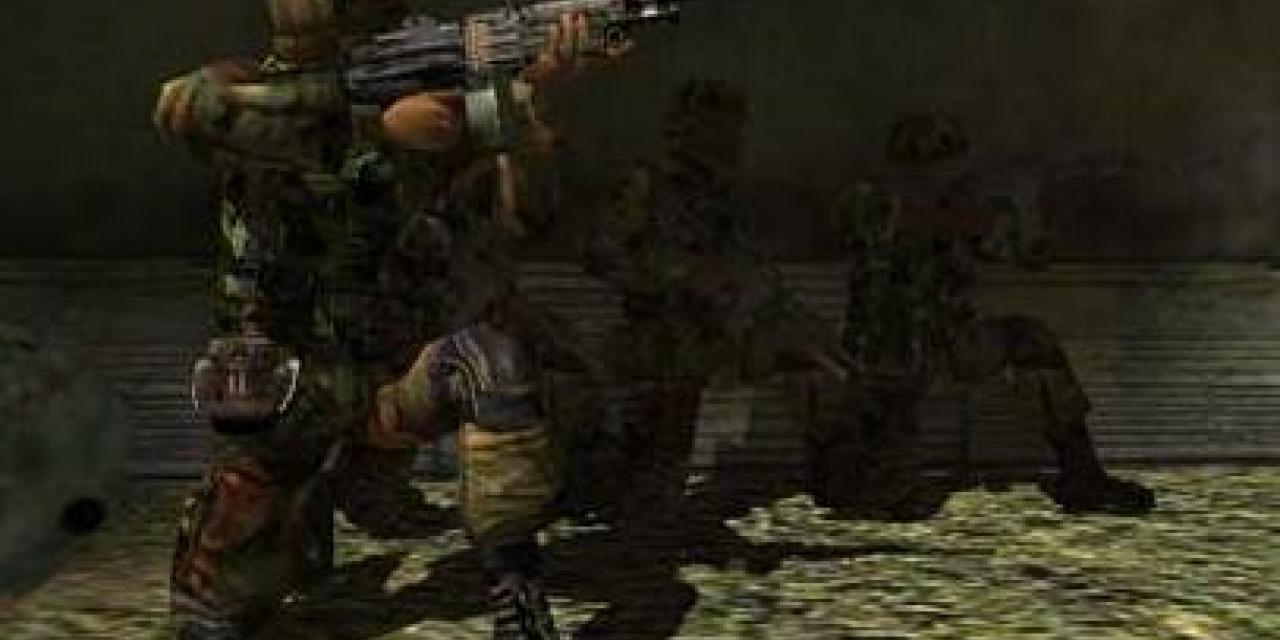
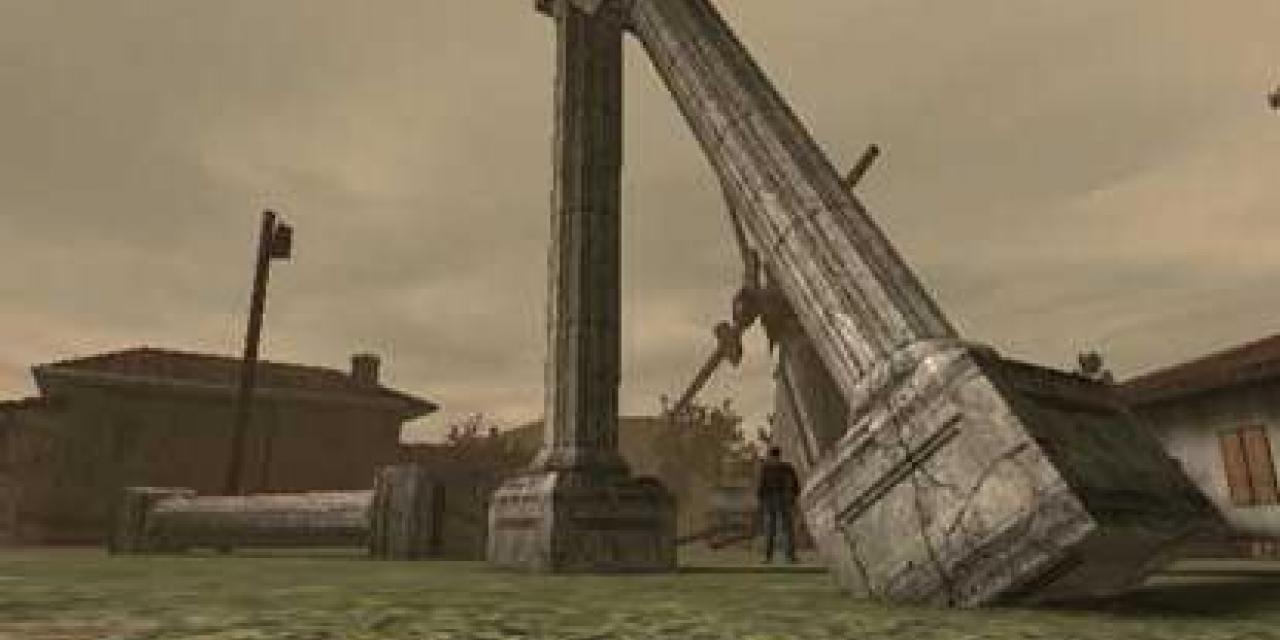
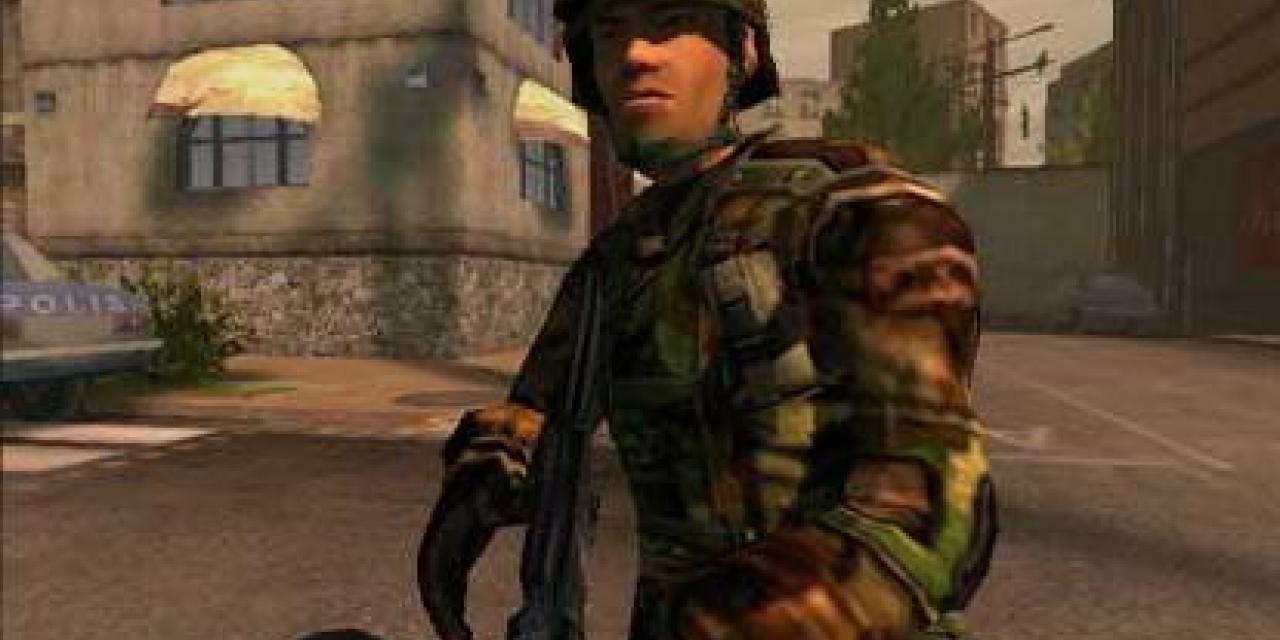
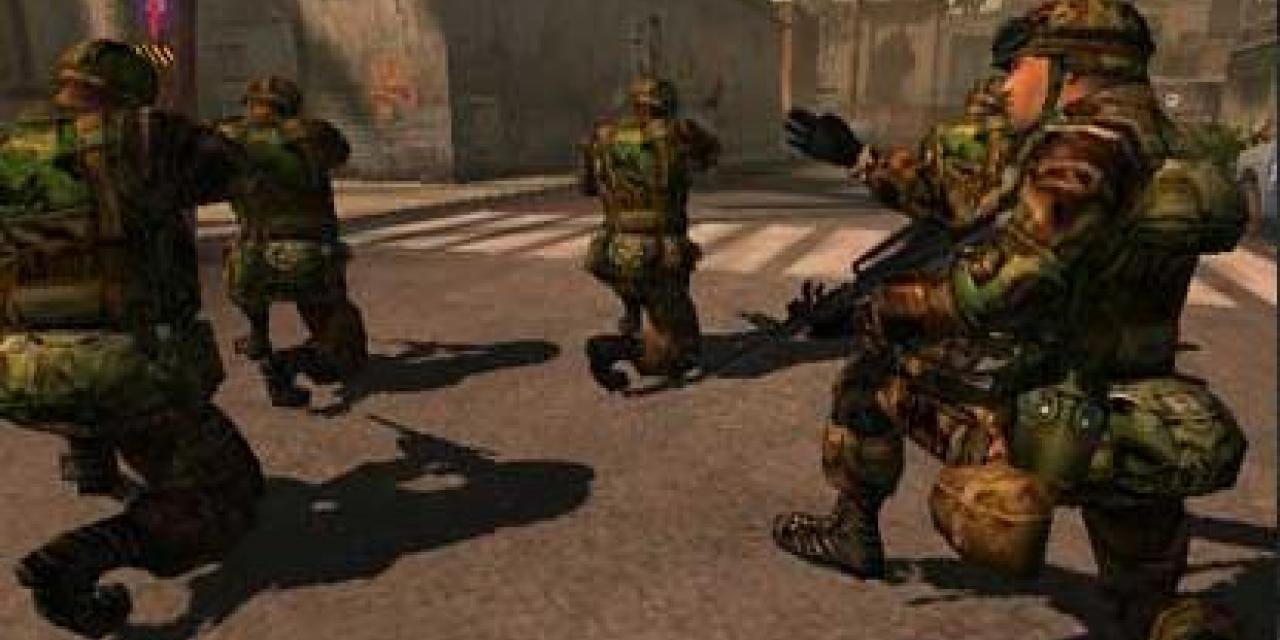
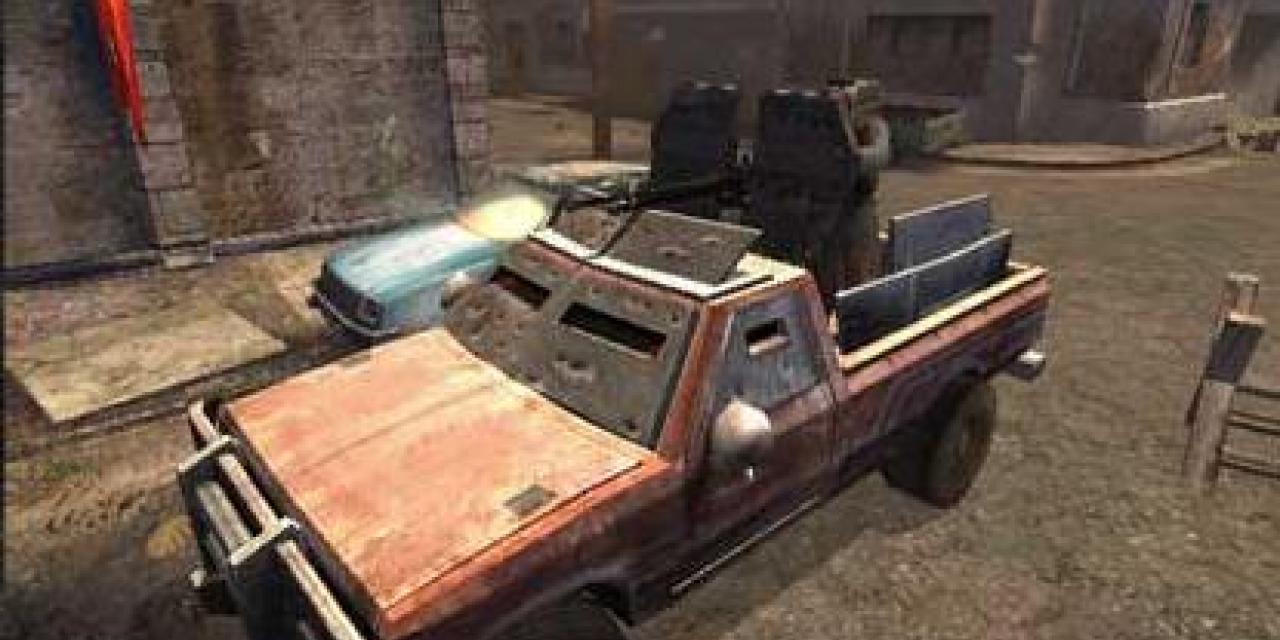
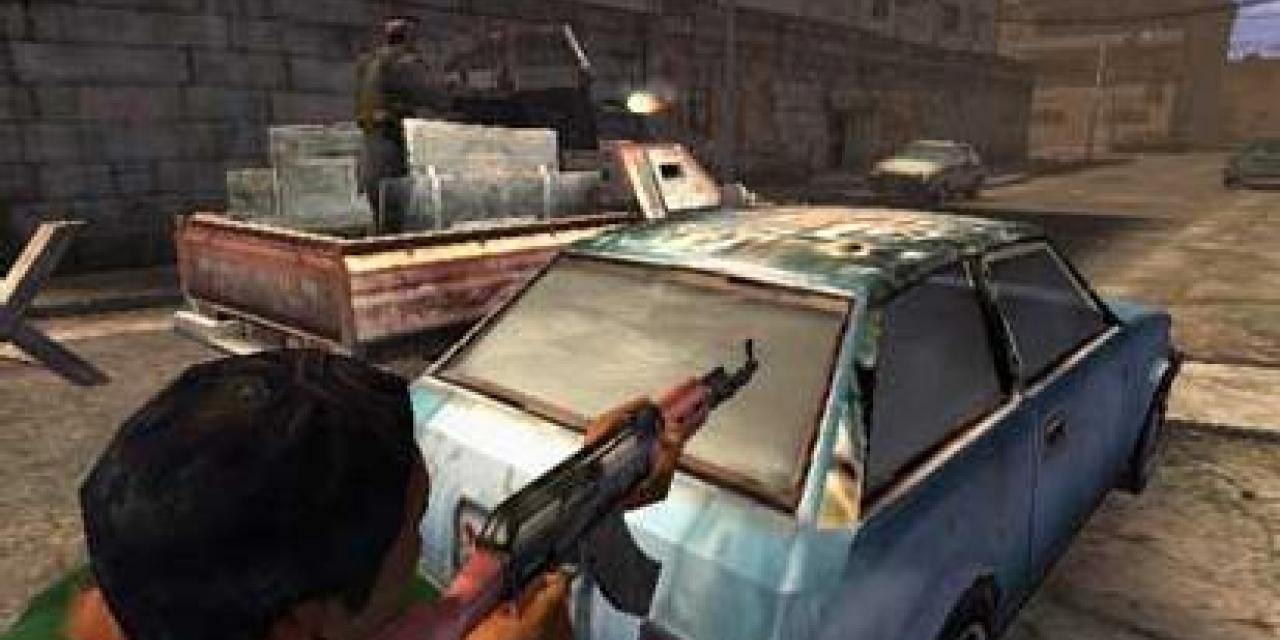
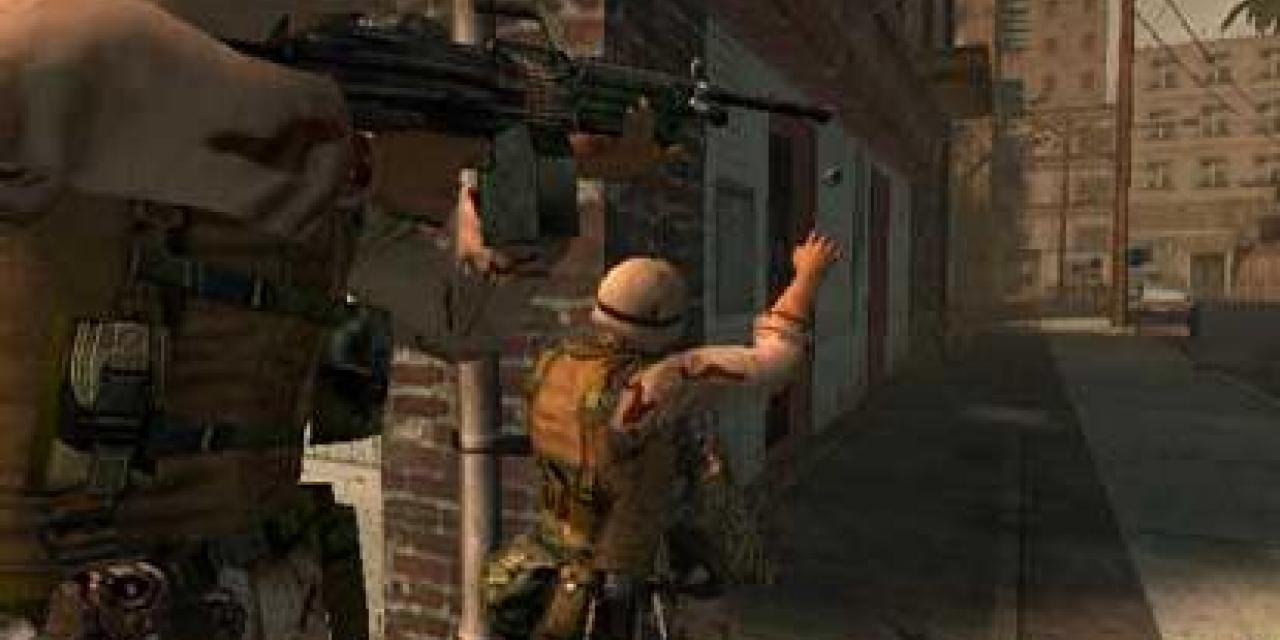
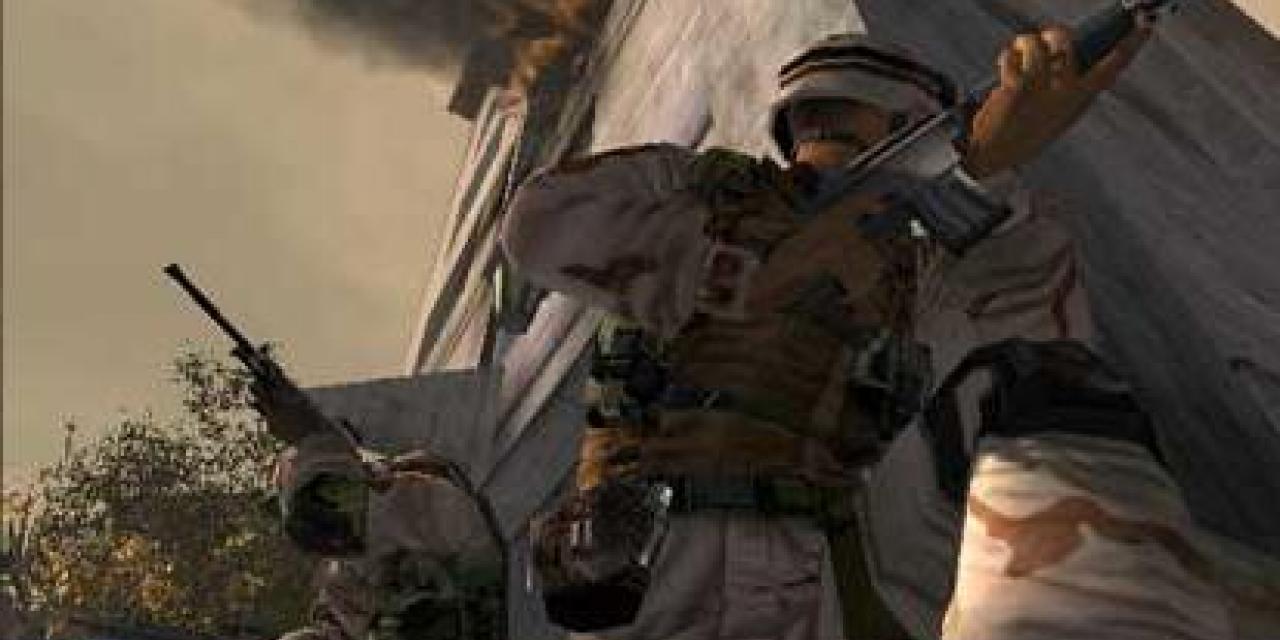
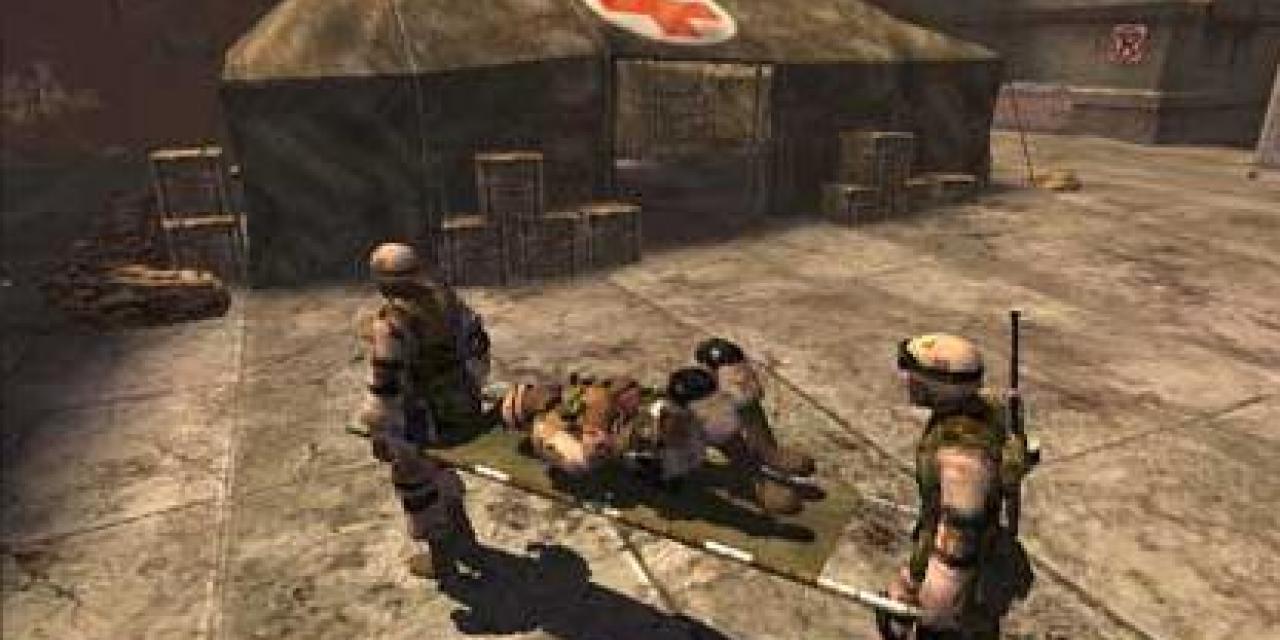
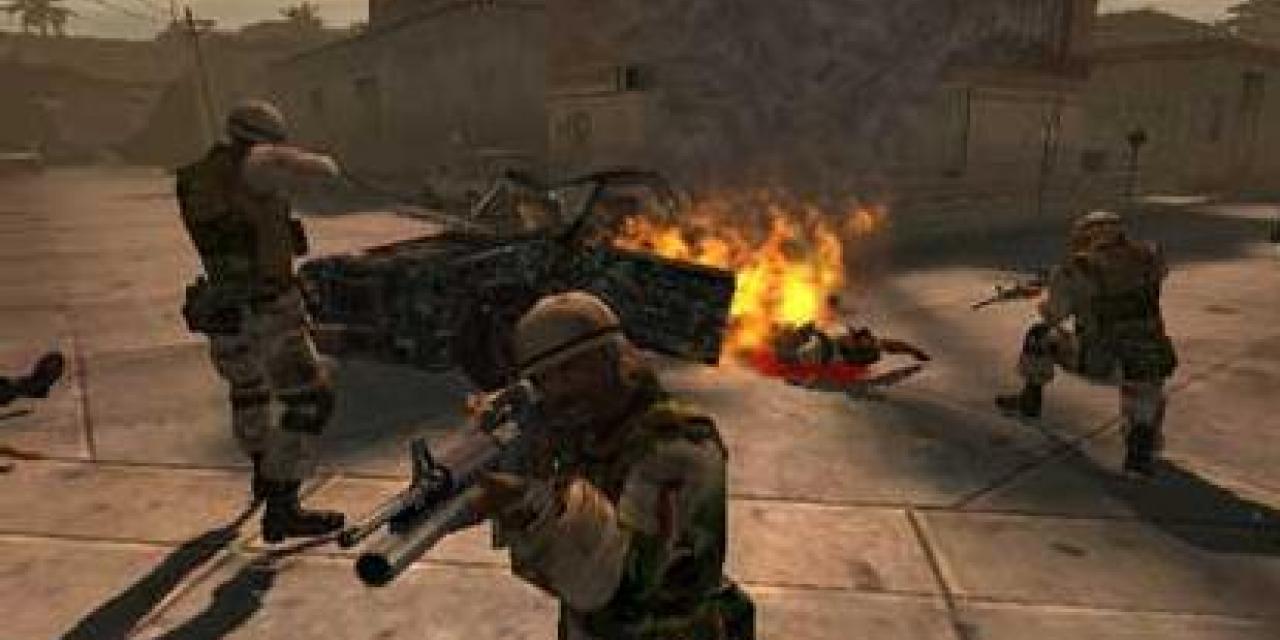


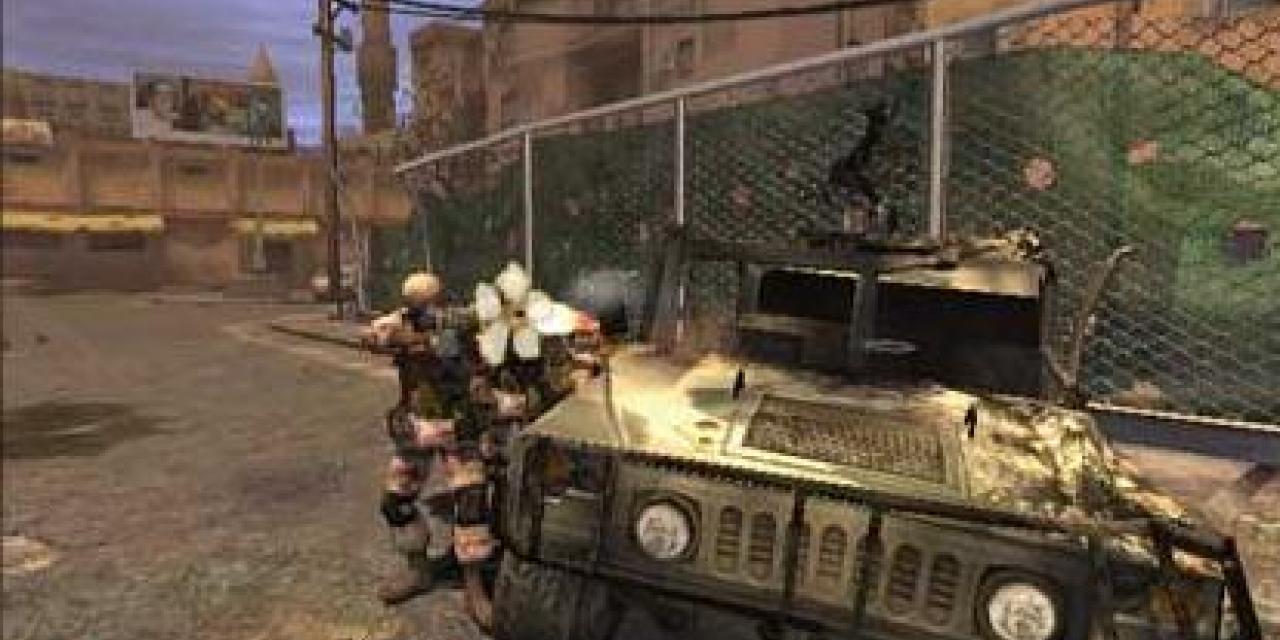
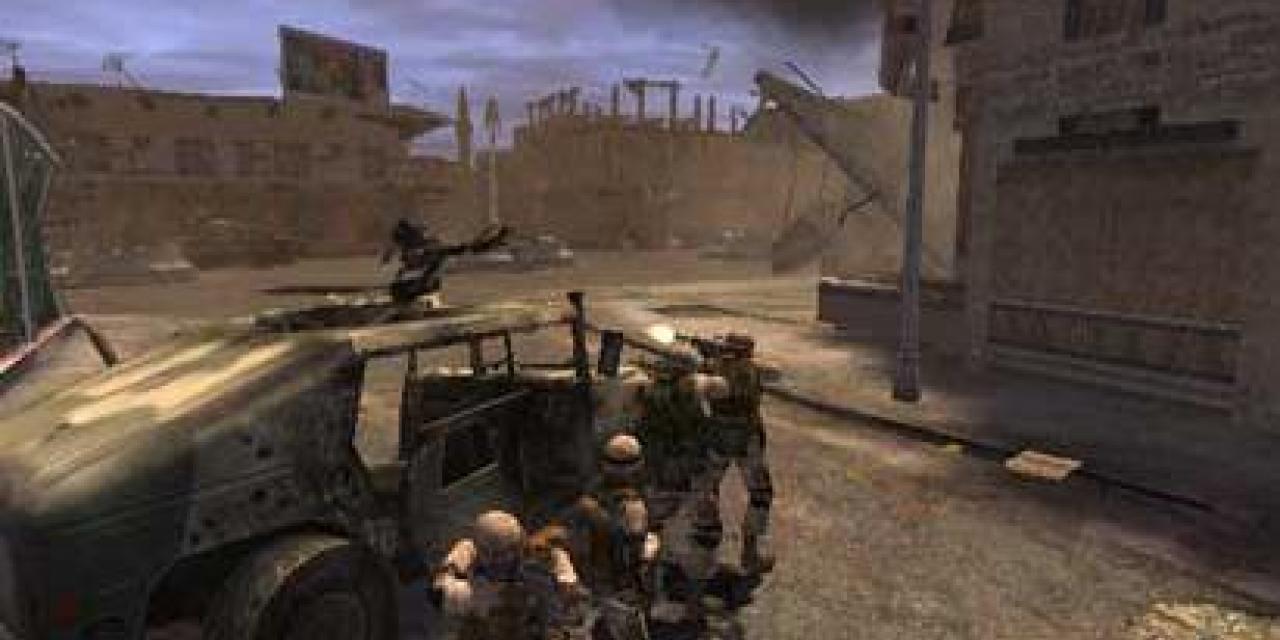
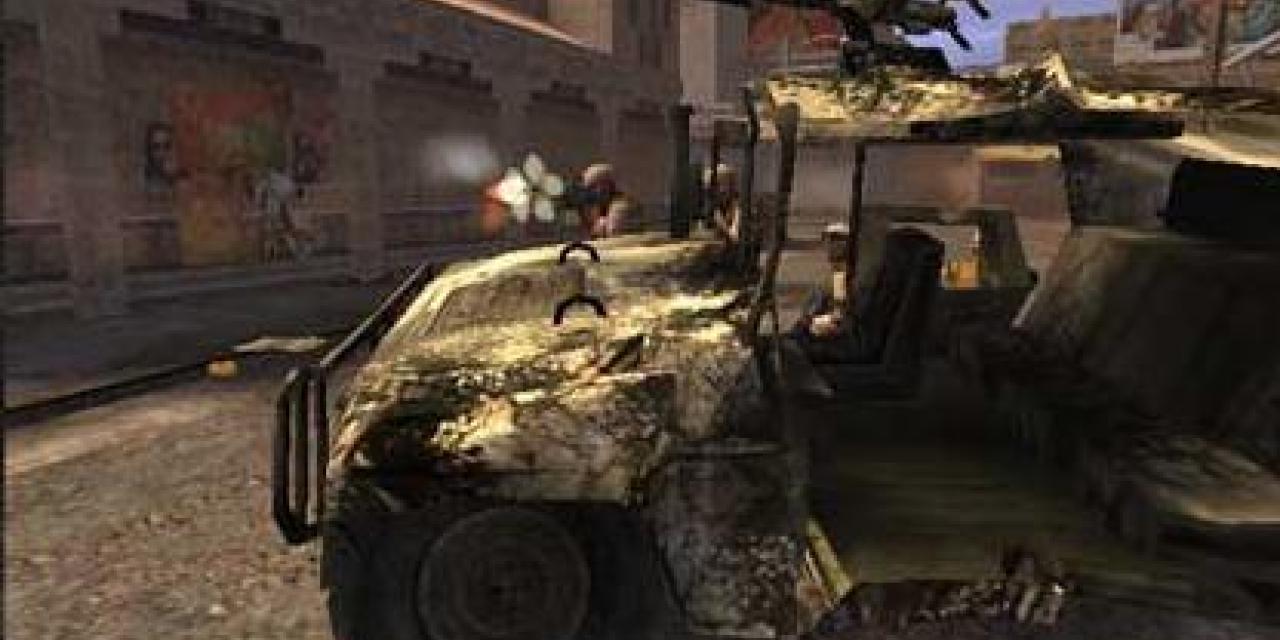
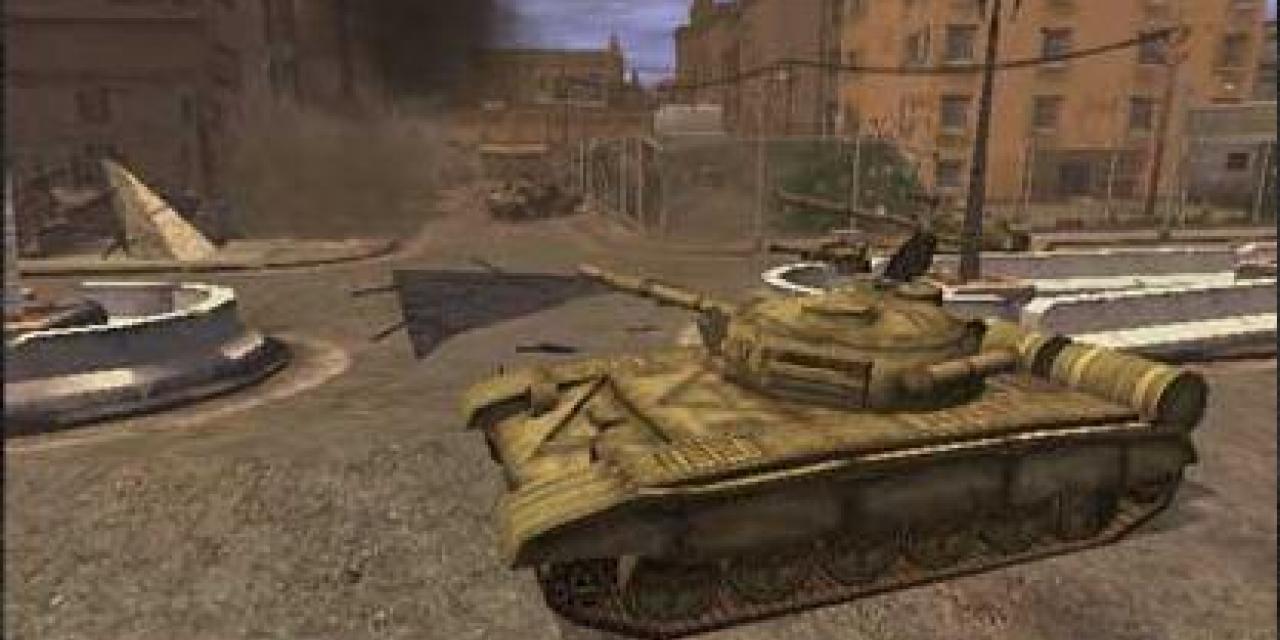

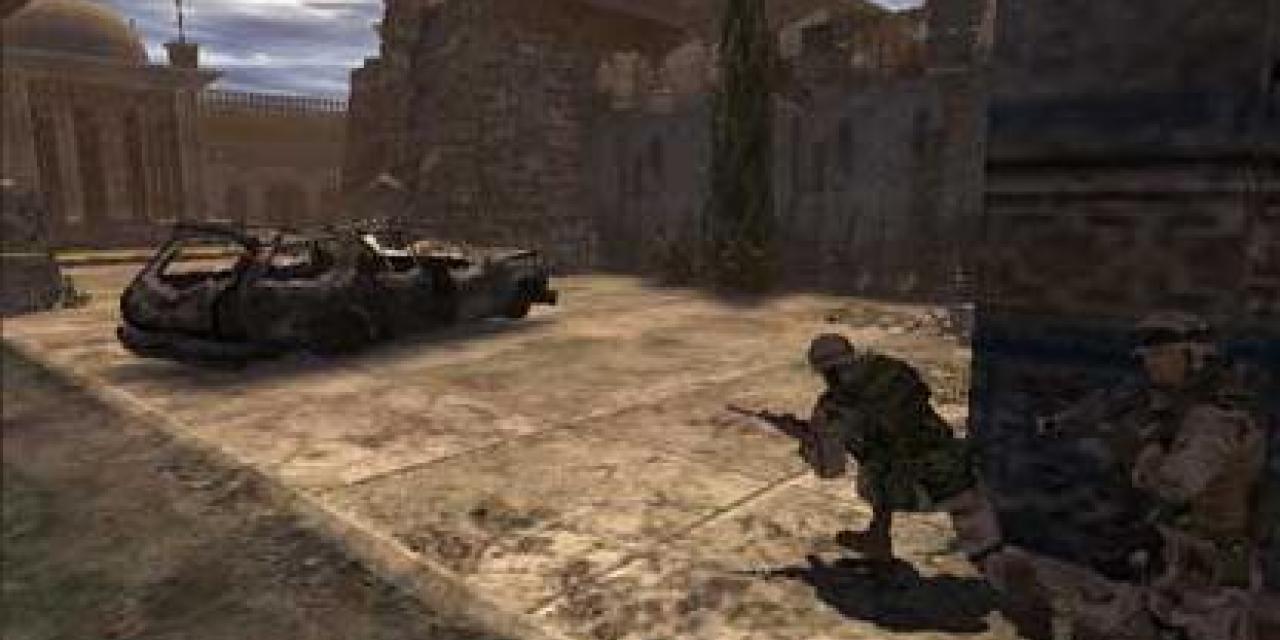


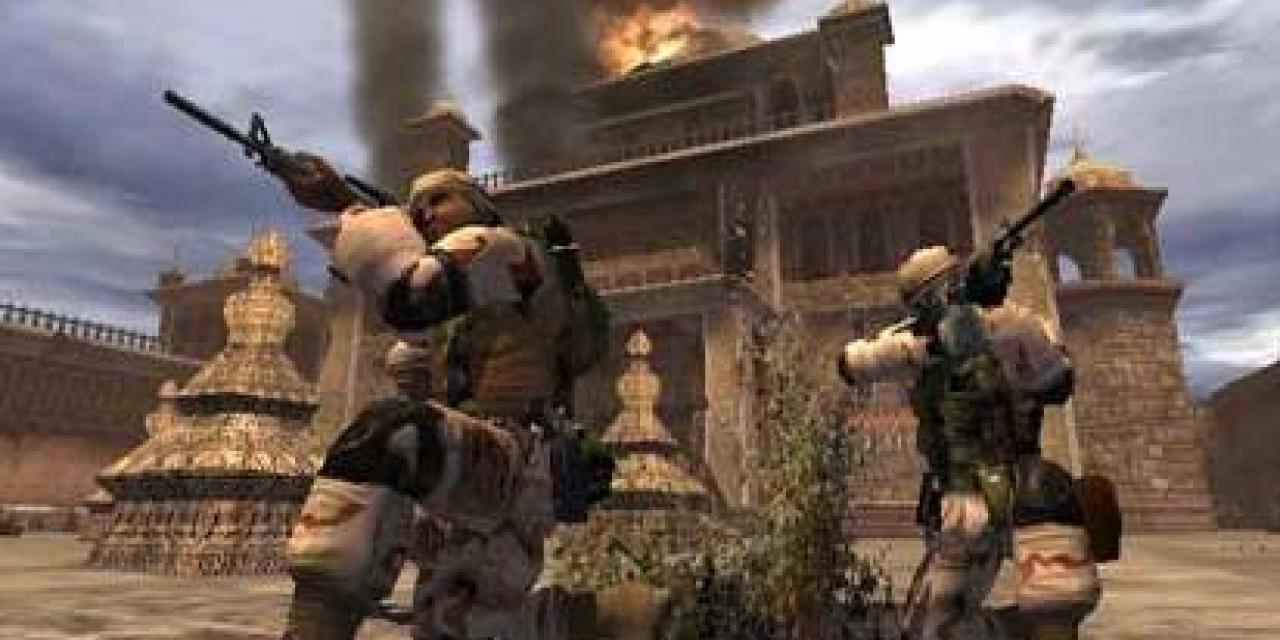
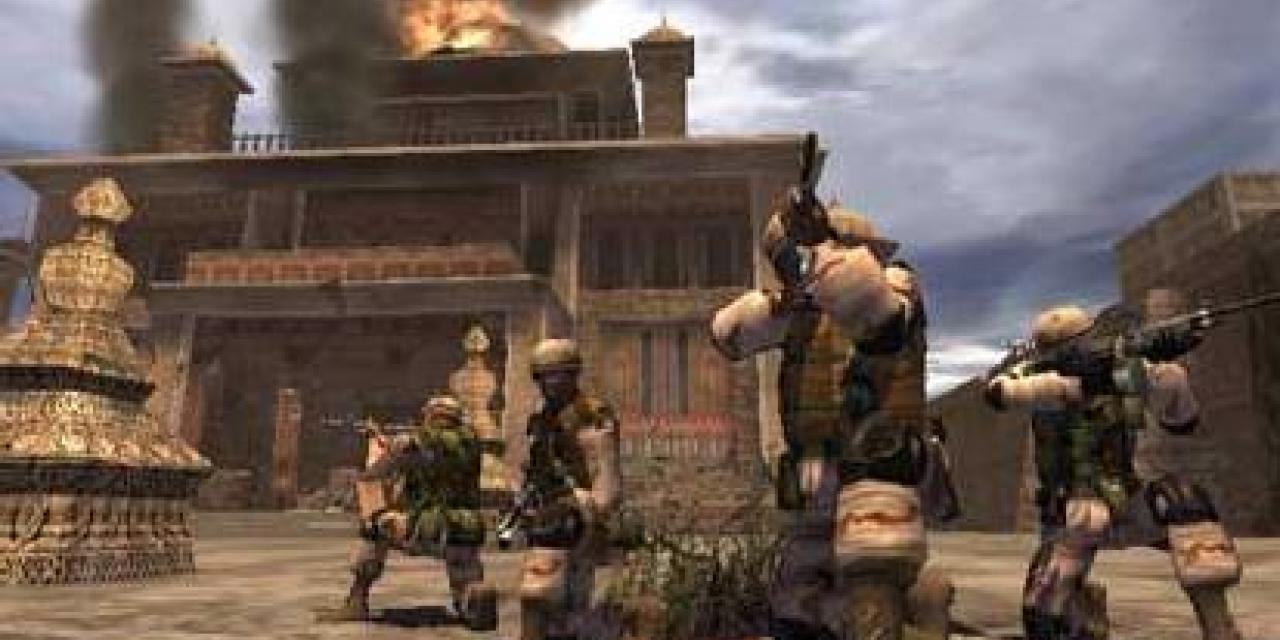
Many classic action FPS games have carried the title of military shooter and some have come very close to being one, Full Spectrum Warrior claims it is the definition of such a game. The game has an impressive background and has all the elements required for the creation of a blockbuster.
Originally a game commissioned by the U.S. Army to train light Infantry troops in urban combat situations, what we now call Full Spectrum Warrior (FSW), is a squad-based, tactical action game that focuses on critical decision making by the Squad Leader (the player). The game is based on a light Infantry training simulator designed by Pandemic Studios for the U.S. Army as a tool to reinforce Army doctrine and team effort among troops, simulating today's urban combat, peace-enforcement, and peacekeeping missions. THQ is publishing a commercial/retail version of the game which will build upon the Army deliverable with new features and gameplay. Full Spectrum Warrior promises a level of realism and accuracy that has never been seen in a military-based game before.
Story
FSW differs from its military counterpart by the development of a story which rather than just being a training scenario, attempts to involve the player offering purpose and interconnecting missions. For the needs of the commercial version of the game a new country was created, the tiny desert nation of Tazikhstan, nestled between modern day Afghanistan, Pakistan, and China, occupying an arid landscape of desert plains and rugged mountains, is your arena.
Players act as the Squad Leader, providing direction to Alpha and Bravo fire teams. The successful Squad Leader effectively uses cover in the environment and moves his fire teams in a coordinated fashion so they can protect themselves from possible attacks that could come from any direction. Full Spectrum Warrior puts you in the dirt with your men, where danger lurks around every corner. You are faced with a variety of missions, all taking place from 6am to 6 pm, contained in approximately 6 chapters.
Pandemic Studios
Pandemic Studios was started five years ago by industry veterans Josh Resnick and Andrew Goldman, and are now working on four high-profile titles for leading publishers, three of which have not yet been announced. They're located in the Westwood area of Los Angeles. Previous Pandemic titles include Battlezone II, Dark Reign 2, and Star Wars: Clone Wars.
The FSW Xbox version will be released in early 2004 in the U.S. and will be closely followed by a PC version. Dates for other territories have not yet been announced and GameCube or PS2 versions are not expected.
The most important aspect of the description of FSW is that it is the real thing, for all intents and purposes it is the same software package as that used by the army. If you expect an America's Army type of game you will be disappointed, FSW was created for training army personnel, not for U.S. Army recruitment purposes. This distinction is, at the same time, the most exciting aspect of the forthcoming game and the biggest challenge it will have to face. Restricted by its authenticity, Full Spectrum Warrior will feature enhancements, in order to become a fully commercial product, but most of the gameplay will remain true to the original. Full Spectrum Command was another similar title, developed for U.S. Army training of higher commanding officers and involves more high-level, book-learned command akin to moving symbols on a map. While Full Spectrum Warrior integrates intense action with elements of strategy and team management - the player is
on the ground engaging in combat with his platoon. So gameplay in FSW will be anything but boring.
Pandemic Studios, developers of FSW, have spent over two years perfecting the game's AI and systems. According to Laralyn McWilliams, Lead Designer on FSW We're now taking additional time to make a fun, exciting commercial product that builds on that authentic Army base. The Army product is finished and in testing with the Army at Fort Bening.
Gameplay in FSW will be a challenging experience for even the more seasoned gamers out there. The title's military roots are clearly evident throughout the game and commanding your squad becomes a grueling test of character rather than a simple chance to show-off your rifle skills.
As soon as you undertake your first mission, you will realise that you are out of your depth, much like a young grunt facing his first, real combat situation. Your team members have no life bars, you rely on your team for sensory and data input, information which you receive from them, proves vital in the final outcome of your mission. According to McWilliams Another interesting aspect of the game is its emphasis on authenticity to Army doctrine and the Army approach. For example, teammates never point their weapons at each other, because a slip of the finger means killing a comrade. Similarly, if one of your soldiers is wounded, you get a new primary objective to aid him then get him to the closest evacuation site for treatment.
Although an action game at heart, FSW relies heavily on strategic decisions made by the player. You cannot simply blast your way out of a difficult situation, as you can in other games, that is why Pandemic describe it as a Tactical Action game. One such good example of the use of tactics is clearly evident in the importance placed on the way you deploy your squad. You have to constantly be aware of where your soldiers are and which trouble spots they should keep an eye out for.
Another difference between FSW and other military action games is that a simple count of weapons or a description of special moves doesn't apply to its game play style. Your team has set weapons that a light infantry team uses: all M4s except the automatic rifleman, who carries a SAW. In addition, the grenadier has the M203 grenade attachment on his M4. Engaging in combat is a combination of telling your soldiers where and how to move, and telling them where and how to shoot.
Pandemic are experienced developers however and know that alienating your players from the get-go is not a great idea if you want your game to succeed. The game interface has been greatly revamped in order to accommodate modern gaming needs and some Head-Up-Display options will be available, including a compass and some indicators such as colour coded troop information.
Although health bars will not be included for your troops, some in-game features such as cover for your troops will have an indicator to let you know when they are no longer of any use for you. None of these features are available in the military version of the game, where players have to use visual data in order to assess situations.
According to Pandemic, Unless you consider military games a genre (spanning such very different titles as Medal of Honor, Battlefield 1942, Commandos, and Secret Weapons over Normandy), FSW is in a genre by itself. In fact, playing FSW for a while changes the way you play other games, and even how you look at the world. Because it uses urban environments and requires you to learn Army tactics as you play, you find yourself looking down the street trying to figure out which corners to use, or whether you'll get better cover from the dumpster or the Chevy. We find ourselves playing games like Counterstrike and Halo using real Army tactics of cover and suppression fire, and moving in certain patterns and formations. As geeky as it sounds, being so immersed in making Full Spectrum Warrior has changed us as game players!
Now a statement as ambitious as FSW is in a genre by itself, can only mean that the developers have taken due care to prepare gamers for the FSW experience. In that respect Pandemic have introduced a comprehensive, step-by-step training mode and a special replay option which is worth special mention. Every mission you play will be recorded, in full, in the background so that you will have the option of watching a complete mission for training purposes. Although this would have been an exciting feature on its own, the truly exciting part is that you will be able to step in at any part of the replay and try out a different strategic approach. It won't be easy though since enemies won't appear unless you had already spotted them. Another even more exciting aspect of the replay feature has to do with online play but more about that at the relevant section.
It is likely that gameplay in FSW will require a stretch by the players in order for them to familiarize themselves with the team's movement and procedure as well as the in-game commands. Although this learning curve may dishearten the more impatient gamers, the impressive graphics, coupled with the up-close view of the action and the tension created by FSW's authenticity, will keep most going until they have reached some level of competence in the game.
The sound in the game also helps the atmosphere of controlled chaos it is trying to create. Your team members talk back to you, creating a noisy background but one which contains important information once you get into the game. The weapon and explosive sound effects are very well made and take maximum advantage of the 5.1 surround capabilities while the soundtrack is dynamic and follows the on-screen action.
Online Play
Much of the promise of FSW lies in the fact that it will support XBox Live. Although details of the modes of online play are being kept as a closely guarded secret, we have managed to find out some details.
The game will definitely include a two-player co-op mode in which you and another player will take command of one of the two teams each. You will both comprise the squad and will therefore share a common goal. This mode will definitely create some interesting dynamics between the game partners and will rely heavily on successful team-work and communication.
The more exciting aspect of online play however, is that which includes the replay feature mentioned earlier. Players will be able to trade their saved mission replays over the XBox Live service. Although the exact limitations and the extent to which those replays will be used are not yet known but important factors it is possible to imagine that by creating
a replay, players may be able to set challenges for others or to ask for alternative routes for a mission.
Expect further details on the online features of FSW as soon as we get them.
Controls
When a game as ambitious and complex as Full Spectrum Warrior gets to appear only on PC and XBox many are quick to criticize the console version of being oversimplified due to the lack of adequate control options. Some even go further, as in the case of Deus Ex : Invisible War and suggest that the PC version is dumbed down in order to accommodate the XBox version. FSW cannot be such a case, simply because without adequate controls the game will be unplayable.
Since PC controls are not an issue here is a look at the console controls for FSW.
The left stick guides an indicator over the screen and is used in conjunction with the face buttons, which will be assigned a variety of orders, in order to guide your troops. The right stick will change your view, also giving you a chance to inspect your troops. Other buttons will allow you to zoom into certain areas and to target grenades.
There will also be a nudge feature which will allow the player to become one of the squad and to nudge one of the soldiers in order to modify their positioning in a formation. This will create a more customized feel for the game, allowing players to stray from the formations automatically adopted by the AI.
Although the controls are adequate for the game, the authenticity will create situations where you will be too busy thinking what to do next to find the right button to press. According to McWilliams It sounds simple and in fact controlling your soldiers is simple, but once you're in the environment and your men are in danger while the bullets start flying, players begin to sweat and panic. It's a very immersive experience.
Find out what Pandemic have done with Full Spectrum Warrior's AI by following the link below and to your right.
Typically AI is considered as part of the gameplay but it would be unfair to do so with FSW as it is the AI that separates the game from its competition.
When a game promises action and tactics in the same package and plans to deliver without allowing the player to, directly, fire a single shot, the AI had better be good, extremely good. Unlike most similar games, AI routines in FSW cannot be limited to your opposition but have to apply to the soldiers making up the squads you command. Order which the player issues have to be executed in a precise and reliable manner, that expected of well-trained soldiers. At the same time, your troops have to be flexible enough to adapt to environmental changes. So if you issue an order asking your troops to advance to a point on your map, they will proceed cautiously, utilising the cover available and reacting to enemy challenges which may come up on the way. So if a comrade is injured, your troops will rush to his assistance, setting your orders aside until that particular crisis is resolved. The detailed team work which the soldiers employ when carrying out any orders is stunning and compelling to watch and suggests that a lot of effort has gone into the AI in order to reach such quality and detail.
In order to further enhance the impact of the friendly AI on the player, Pandemic have also assigned very distinct, if stereotyped, personalities to the soldiers, details on each team member, including correspondence with family members and friends, can be found in the games official web site. Unlike most games that claim to do the same, those personalities are clearly visible within the game and affect most aspects of a soldiers conduct during the mission. You even find yourself growing attached to some of your squad members which can eventually cause some distress when injuries or deaths take place.
Enemy AI is as advance with your opponents running for cover, regrouping and selecting strategic points for an ambush as the mission unfolds.
Technology
When the U.S. Army asks for a game to assist in training, it does not hold back on any of its specifications. One quick look at Full Spectrum Warrior and you realize that the game is visually exquisite with environments and characters carrying high levels of detail. What is even more impressive is the fact that FSW plays out, largely, in an urban setting and therefore has to deal with recreating streets, vehicles, architectural features etc. It does so splendidly and you do believe that you are in the downtown area of a city in the middle-east.
In order to achieve this level of technological excellence, Pandemic had a few advantages over your typical game developer. Except for the Army's, considerable I am sure, funding, the company also had the benefit of working closely with the University of Southern California's Institute for Creative Technologies. The collaboration led to the creation of an in-house engine, specifically tailored for the needs of the unique gameplay and visuals required for FSW.
While the game is now almost complete, tweaks are still being carried out and according to Pandemic, we can't help but think of many other terrific uses for its (FSW) unique game play and engine. You will almost certainly see other FSW engine games in the future.
Physics
Pandemic have not yet been very forthcoming about the full technology behind the game, it is however obvious from the various in-game videos that a lot of consideration has been given to the way the environment interacts with play and of how it will affect your team's efforts. The demos suggest a very responsive environment, walls will be damaged or destroyed if shot or hit by a grenade, cover will degrade if it receives sustained fire, one example is the corner of a wall, which will chip, making the use of that corner as cover impossible. Again the AI will respond and your troops will look for some other form of cover. Glass will shatter when hit, explosions will cause flammable materials to catch on fire with the smoke created affecting your visibility, your cover will disintegrate under fire, filling your surroundings with splinters. Overall an extremely engaging experience.
Read on to find out how the official U.S. Army version has changed for commercial use.
There are some worries concerning how the army will treat the commercial game and how much it will ask Pandemic to remove.
It is difficult to draw the distinction between the parts removed in order to make the game commercially viable and those removed in order to protect military information.
Common sense suggests that not much of the technology will change since it does not give away much about the U.S. Army. The detail of the characters will also apply to the uniforms as they will be U.S. Army issue.
Considering the Army donated personnel in order for Pandemic to motion-capture precise military moves it is encouraging to see that those moves remain part of the commercial game. What really has changed the game from a training simulation to a commercial product is the removal of many time consuming aspects of gameplay. The average gamer would not be patient enough to follow the Army's training simulation as it would seem to draw itself out over a long period of time. The military simulation is also different due to the complete absence of any on-screen information or head-up display. Most of the input an Army trainee gets comes from his team's feedback and from the evaluation of visual information.
Another difference is the introduction of more impressive visual effects for weapon fire and explosions. In its attempt to remain a realistic combat simulation the Army version features weapons which will not create massive flares or cause big explosions, the commercial version, of course, contains exaggerated weapon effects.
It is also certain that a variety of military combat-related moves, commands and actions have been removed but most will hardly be missed since the jargon, moves etc. that have been left in the commercial version are enough to keep most gamers guessing for quite some time.
Find out what we think of the game and what factors could possibly influence its launch by following the link below and to your right.
Full Spectrum Warrior has already caused a stir in the industry and managed to pick up quite a few awards during E3 and around the world since. The titles of the E3 awards give away a lot about what you can expect from the game.
Best Original Game, Best Simulation and Most Innovative Design, are not awards you can easily dismiss.
One of the reasons why FSW seems so tempting is the fact that it was never meant for public consumption, its association with the U.S. military does however limit the game in many ways. This is an action game which does not let you fire a single round yourself, instead you assess a situation, aim and then give the command. FSW compensates by grabbing the player and sticking his face right-up against the action. You are so close to what is happening that you cannot help but become involved. The graphics, sound and gameplay all work together very well in order to immerse the player in the experience. This is a truly excellent simulation with strong tactical aspects.
Although FSW has so many things going for it (stunning visuals, innovative premise and Army funding) it will have to fight in order to convince gamers, conditioned in the past few years to expect big name FPS military titles, that it is worth the time and effort. Some will claim that FSW wants to have its pie and eat it since it is a blatant attempt to attract both strategy and FPS gamers.
There is little doubt that the game contains elements of both types of game but in our opinion it handles both types of genre elegantly and does manage to stand on its own feet.
Whether FSW will forge its own niche in the gaming market will rely greatly on how good a job THQ will do in marketing it. One challenge they have to face is the fact that the game will only be available on XBox and the PC. The publishers will certainly not wish to
alienate PS2 owners and will therefore have to take all necessary measures so that the PC version does not appear at all inferior to the XBox one, in features and especially in the all-important online gameplay aspects.
If you wish to get a taste of the game in order to form your own opinion of the game, follow the download tab above to find the link for the demo video which includes commentary from William Stahl, FSW Project Lead.
File information
File name: FSW_Demo.mov
File size:
Mime type:






